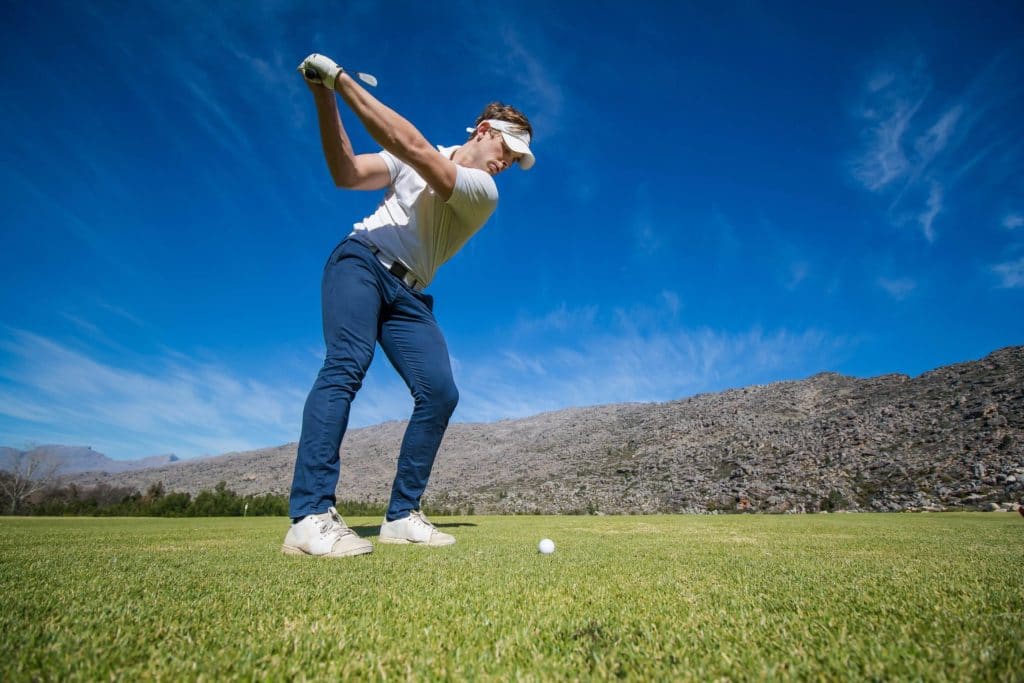Golf Physiotherapy
As the professionals roam the manicured green gardens, it will seem to an outsider that golf is nothing more than a low-impact sport with the only risk of sunburn and possible earaches. As a matter of fact, golfing requires more athletic ability than many realize, and even occasional golfers will suffer a golf injury. Most golf injuries are caused by the stress placed on your body during the swing. An underlying defect in a swing can cause a variety of stress-related injuries from the spine to the wrist. Here are four ways golf physiotherapy can directly improve your game.
- Treatment and Prevention of Golfer’s Game
Chronic elbow pain is as synonymous with golf as it is with tennis. Similar to tennis elbow, the golfer’s elbow is a physical condition that causes pain when the tendons of the forearm muscles join the “bony hump” at the bottom of the elbow. It isn’t uncommon for pain to spread to the wrist and forearm. A physical therapist will suggest exercises that safely and gradually strengthen and stretch your forearm muscles.
- Treatment and Prevention of Low Back Pain
Low back pain is the reason Tiger Woods is no longer Tiger Woods. However, even if you suffer from this common golf disease, you can still make a name for yourself with golf physiotherapy. But it starts with understanding what happens to your lower back when you swing. During the follow-through and downswing phase, the facet joints of the trailside undergo considerable compression. Many professional golfers show degenerative changes in their facet joints during the x-ray. In response to repeated stress and inflammation in the facet joints during the swing, your spinal nerve can become compromised, causing muscle spasms. This cramp can make swinging almost impossible.
A physiotherapist will carefully examine the surrounding tissues of the interspinous muscle, multifidus muscle, and ligament, as well as the periosteum of the nerve arch, as they all share similar innervation with the facet joints. When there is cause for concern, we will prescribe various treatments and therapies to correct any abnormalities. Alternatively, the physiotherapist will recommend some preventative measures, including at-home and in-clinic stretches and exercises to make sure you are not a victim of this common golf problem.
- Rotator Cuff Can Injure You
Shoulder pain is a real pain for professional and occasional golfers alike. Most of the time, this golfer’s nightmare is directly related to the four separate muscles that work together to allow golfers to twist, lift, push, and pull their shoulder – the rotator cuff. The most common rotator cuff injury is increased inflammation of one or more tendons, commonly called tendinitis. Although it can be the result of trauma, it usually repeats itself after repeated movements and poor technique. All you have left is the loss of function, pain, and weakness; it takes to play a full hole. Again, a professional golf physiotherapy clinic will have a professional on staff that can use an Active Release Technique to treat the rotator cuff injury that relieves and heals pain.
- Improve the Golfer’s Overall Fitness
A physiotherapist may not be as qualified as the resident pro of your club on driving and putting form, but they can make you more golf friendly, and that is vital to enhancing your performance. For instance, if you’re not just treating the common ailments of golfers mentioned above, physiotherapy can eliminate other forms of pain and dysfunction that could affect your game.
Also, golf physiotherapy will help you improve your fitness, which is imperative for on-the course performance as your heart will be significantly affected. Tired of doing a mulligan? You can contact Performance Chiropractic + Physiotherapy to schedule a consultation.



